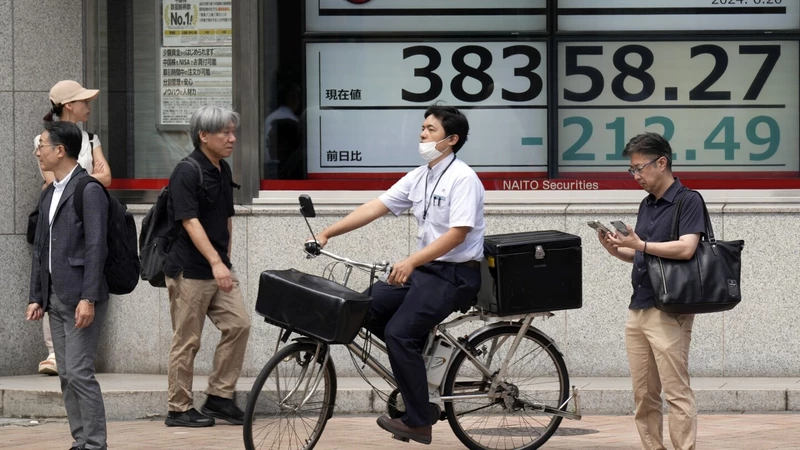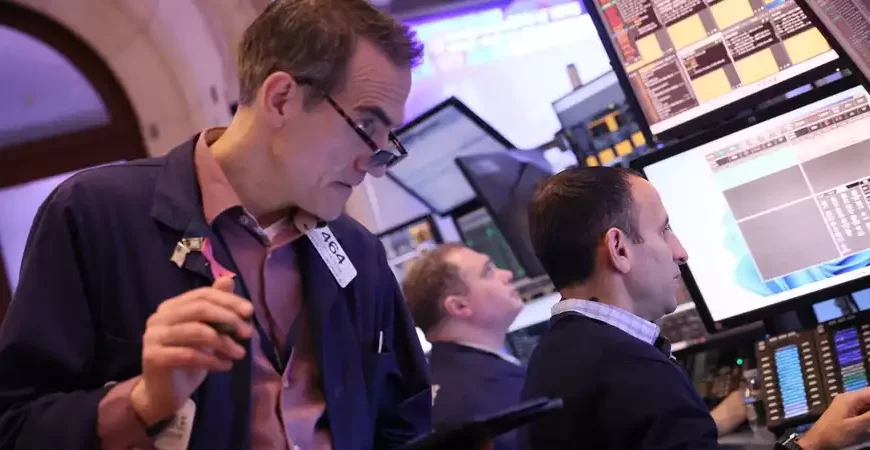On a crisp Thursday morning, European markets emerged with a spring in their step, influenced by a mix of factors from global trading activities. The FTSE 100 in London began the day with a positive note, inching up by 0.2% to reach 8,218.75. Investors had their eyes peeled for a pivotal decision from the Bank of England regarding its policy rate. The anticipation was palpable as analysts expected the central bank to maintain its interest rate at a 16-year high of 5.25%. This decision came on the heels of promising data showing British inflation had finally dipped to the bank’s 2% target in May—the first time it had hit this mark in nearly three years.
Meanwhile, across the picturesque landscapes of Switzerland, the Swiss National Bank made headlines by trimming its main policy rate by a quarter of a percentage point. The bank’s rationale was a noted decline in “underlying inflationary pressure,” despite a slight increase in costs for items such as rents, tourism services, and oil products. This decision was part of a broader effort to balance the economic scales in favor of sustainable growth.
In the far reaches of Asia, Tokyo’s Nikkei 225 index mirrored the optimism of its European counterparts, registering a 0.2% gain to stand at 38,633. However, the Chinese yuan found itself at a less favorable spot, trading at its lowest level of the year. The central parity rate was pegged at 7.1192 yuan to the U.S. dollar, as determined by the China Foreign Exchange Trade System. The People’s Bank of China opted to hold its one-year lending benchmark rate steady at 3.45% and the five-year loan prime rate at 3.95%. These rates serve as crucial benchmarks for corporate loans and real estate mortgages, respectively. People’s Bank of China Governor Pan Gongsheng assured at a financial forum in Shanghai that the country would maintain accommodative monetary policies to spur the economy. Yet, despite such assurances, Chinese share prices remained relatively unaffected.
Elsewhere in the region, Taiwan’s Taiex index rose by a substantial 0.9%, reflecting a buoyant market sentiment. On the flip side, Bangkok’s SET index was not as fortunate, experiencing a 0.5% drop. These mixed results painted a complex picture of the Asian trading landscape.
Not to be left out, Indonesia’s central bank made its own headlines by keeping its benchmark rate steady at 6.25%. The Indonesian rupiah, much like several other Asian currencies, has struggled against the resilient U.S. dollar. This currency weakness has hampered the central bank’s ability to cut rates, a sentiment echoed in a report by S&P Global Market Intelligence.
As U.S. markets prepared to reopen post-Juneteenth celebrations, futures for the Dow Jones Industrial Average remained relatively unchanged, while those for the S&P 500 ticked up by 0.4%. This sets the stage for a cautious yet optimistic reopening, as investors digest global economic signals and await new local data to steer their investment decisions.
In summary, Thursday’s trading activities were a mosaic of cautious optimism and strategic decisions across global markets. From London’s FTSE 100 to Tokyo’s Nikkei 225, and from the Swiss National Bank’s rate cut to the People’s Bank of China’s steady hand, each market moved to the rhythm of its unique economic beat. Investors worldwide watched closely, navigating through a landscape marked by both promise and uncertainty.




 By
By









 By
By
 By
By
 By
By
 By
By







